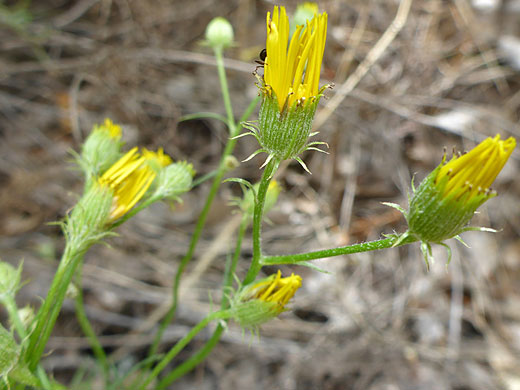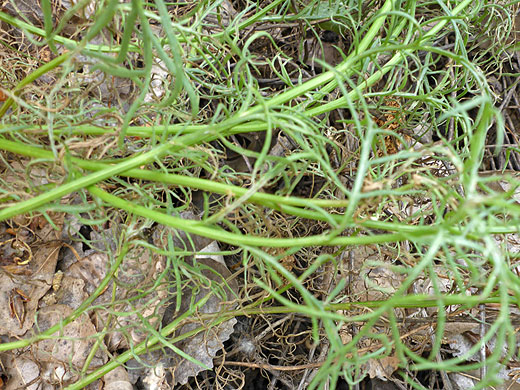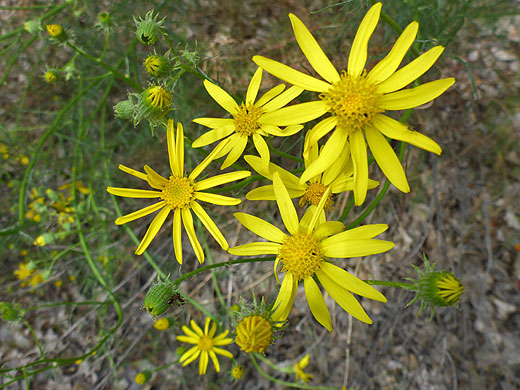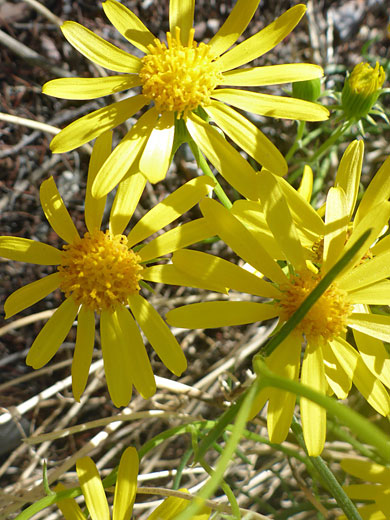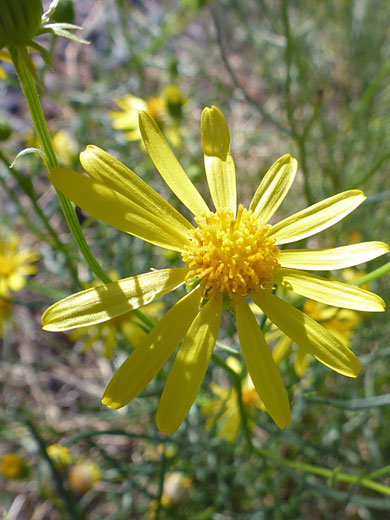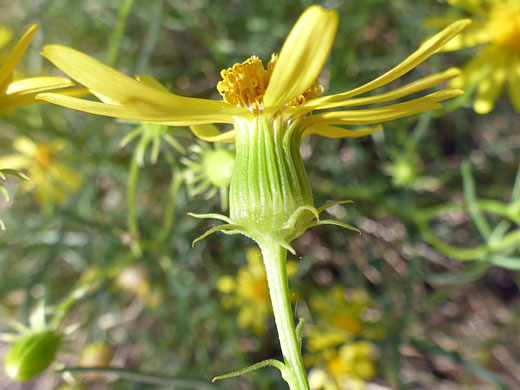Common name:
Threadleaf ragwort
Family:
Scientific name:
Senecio flaccidus
Main flower color:
Range:
From California to Texas, Kansas and Oklahoma
Height:
Up to 4 feet
Habitat:
Canyons, streambanks, open plains; 400 to 7,800 feet
Leaves:
Up to 4 inches long; pinnately divided into linear, thread-like lobes; at the base and along the stem
Season:
March to October
Senecio flaccidus is part of the suffruticosi section of this large genus; plants with sessile leaves that are divided into linear lobes, and leaves which are equal in size all along the stems. This species is tall, up to 4 feet, and the multiple stems (mostly unbranched) and leaf lobes intertwine to form a tangled clump. Stems and leaves are usually smooth and hairless, but may have a light, woolly hair covering.
The inflorescence is a flat-topped cluster of 3 to 10 heads. The base of the flowerhead is surrounded by a ring of thin bractlets, curving backwards when mature; above these are the green phyllaries, usually numbering about 13 or about 21. The tips of the phyllaries are often colored dark brown. Heads have approximately 8, 13 or 21 yellow ray florets and several dozen yellow to orange disc florets. Rays are around half an inch in length.
There are three varieties: var flaccidus is noticeably tomentose hairy, and lacks bractlets, var douglasii (California only) is hairy and has bractlets, while var monoensis has bractlets but is generally hairless.
The inflorescence is a flat-topped cluster of 3 to 10 heads. The base of the flowerhead is surrounded by a ring of thin bractlets, curving backwards when mature; above these are the green phyllaries, usually numbering about 13 or about 21. The tips of the phyllaries are often colored dark brown. Heads have approximately 8, 13 or 21 yellow ray florets and several dozen yellow to orange disc florets. Rays are around half an inch in length.
There are three varieties: var flaccidus is noticeably tomentose hairy, and lacks bractlets, var douglasii (California only) is hairy and has bractlets, while var monoensis has bractlets but is generally hairless.
All Contents © Copyright The American Southwest | Comments and Questions | Contribute | Site Map


